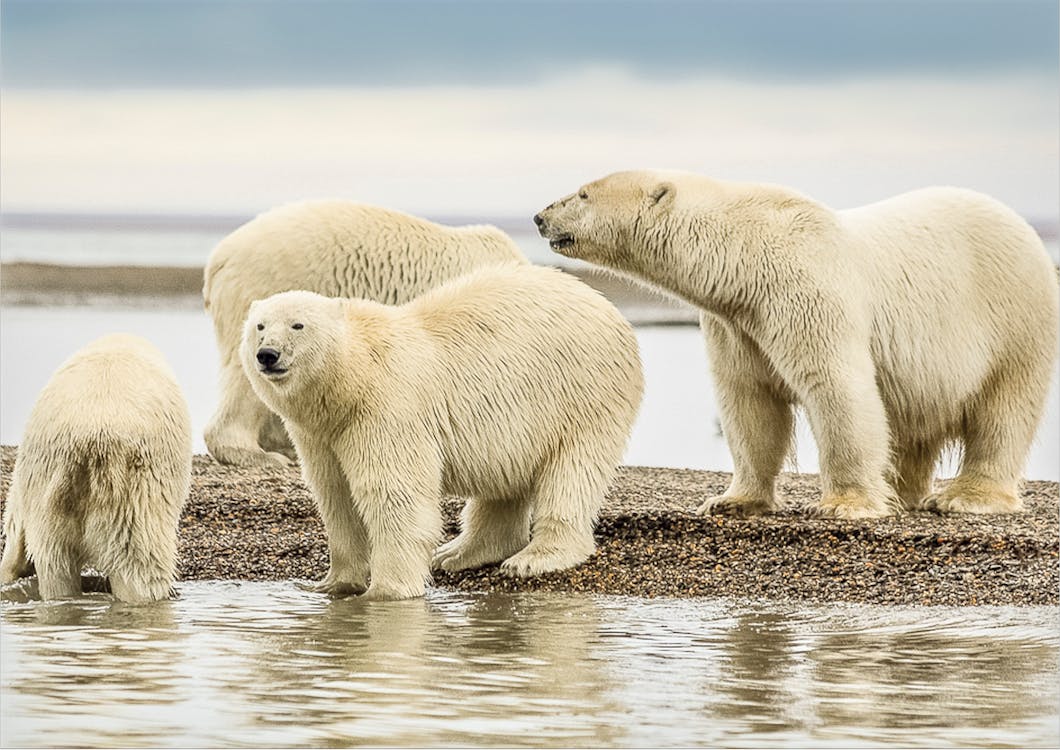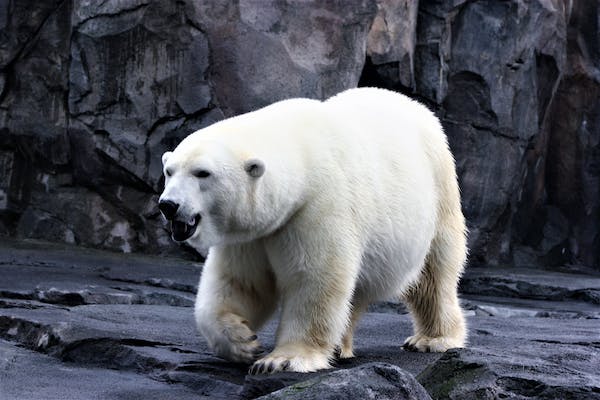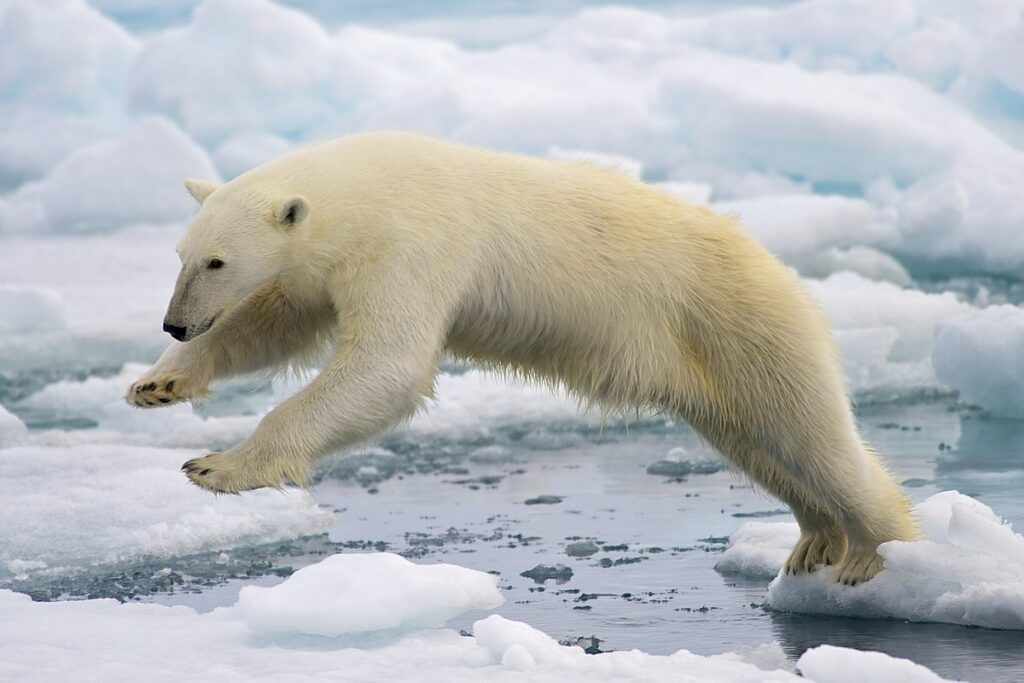The polar bear, recognized widely by its powerful stature and unique, seemingly white fur, serves as an emblem of the icy Arctic region. Did you know their coat is not genuinely white? It is the hollow structure of their hair fibers that reflects light, granting them a camouflaged appearance in their snowy habitat, perfect for hunting seals.
Adapting to the Arctic

These colossal creatures are predominantly carnivorous, with a distinct preference for seals. The seals hunt underwater but come to surface for air through ‘breathing’ holes in the ice. Polar bears, exhibiting tenacious patience, lie in wait by these openings, ready to strike as soon of the seals emerge.
Know More About:
The Dangers to Polar Bears

Despite having no natural enemies, polar bears increasingly face existential threats. Rapid global warming causing relentless ice melting poses the largest danger. As the glacial habitat shrinks, seal numbers, the bear’s primary food source, start plummeting. Consequently, it’s not uncommon to find polar bear cubs succumbing to starvation. Disturbingly, estimates suggest 70% of cubs don’t reach the three-year mark. Also, fewer bears are reaching mating age, leading to a slow population growth rate. This pushes “Polar Bears In Danger”.
The perils don’t end with habitat loss. Commercial exploitation of Arctic resources spews out pollutants, impacting the bears in various ways. For instance, oil drilling increases the risk of disastrous oil spills. Bears, naturally insulated by their dense fur and blubber layer, find their body temperature regulation impaired if they get covered in oil. Ingested oil also leads to toxication.
Moreover, waters tainted by industrial pollutants inevitably reach the Arctic, harming the local fauna. Seals consuming these pollutants become sources of toxic food for bears. Ingested pollutants can impair reproduction in bears, further pushing polar bears towards endangerment.
See Related: The Mighty Giants: Exploring the World’s Largest Bear Species
The Bitter Reality of Polar Bears in Danger

Regrettably, even though polar bears remain off the endangered species list for now, their numbers dwindle alarmingly due to habitat loss and pollution. Unless concerted efforts are undertaken globally, their status could upgrade disturbingly to endangered within our lifetime.